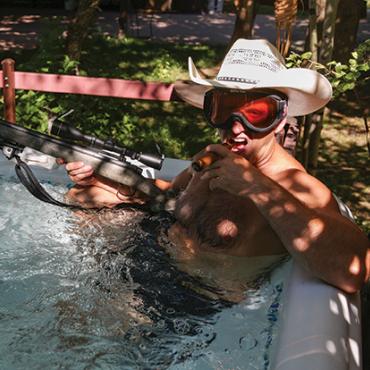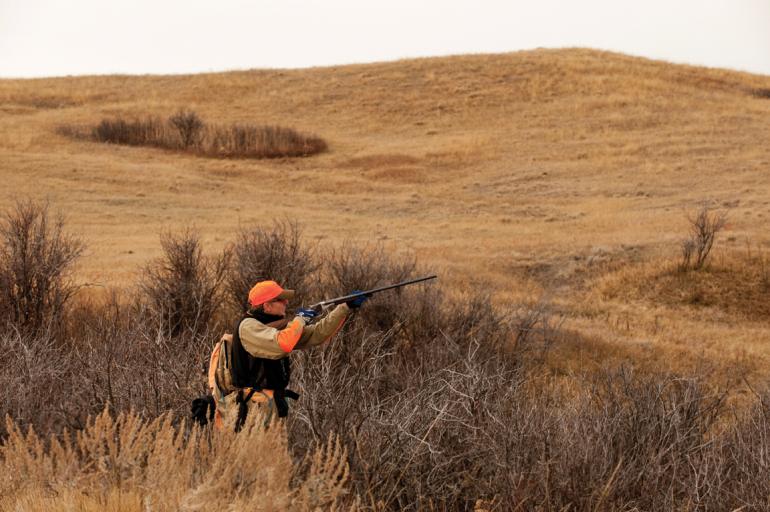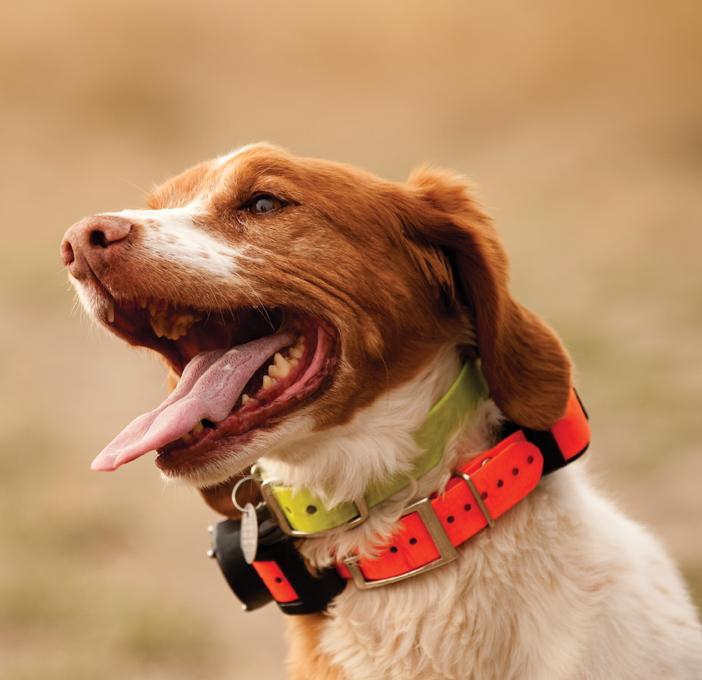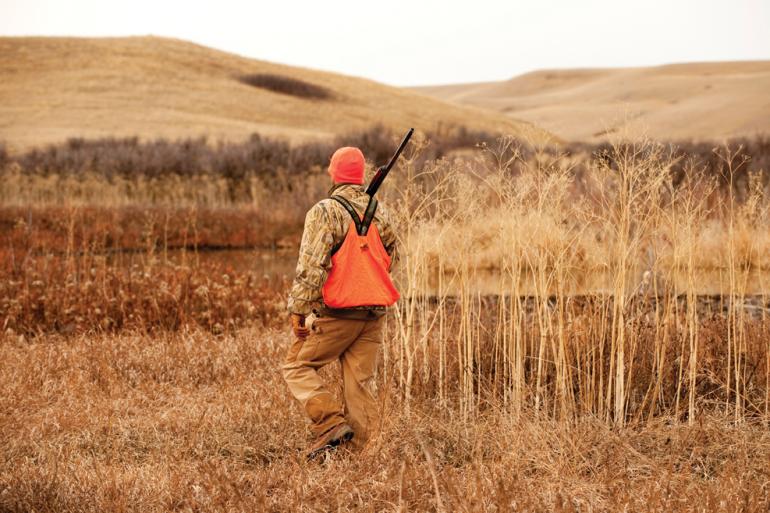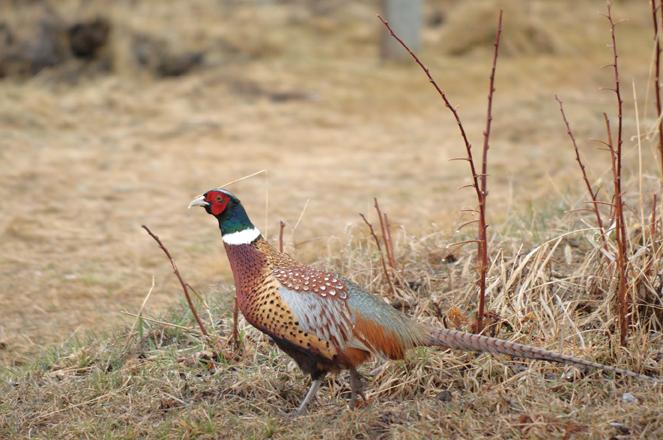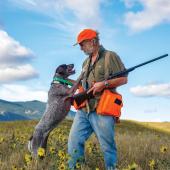Great Expectations
Hunting the Coffee Creek BMA.
From the inside of our pickup truck, the Coffee Creek Block Management Area doesn’t look like much. Treeless and monochrome, bordered by small, indistinct hills, this shallow drainage meanders through a drab and seemingly lifeless landscape. No towering mountain backdrop to impart a sense of grandeur, no rushing stream to enliven the scene. Just a muddy trickle surrounded by oatmeal-colored earth. Not exactly what we had in mind when we planned this trip to central Montana. I glance at my hunting partner, and the look on his face matches my thoughts: We came all the way from Bozeman for this?
Coffee Creek is a renowned Pheasants Forever habitat project, situated some 40 miles from the historic Missouri River town of Fort Benton, where we’ve set up base camp at the Grand Union Hotel. Like most Bozeman-area pheasant hunters, our passion for rustling up ringnecks sends us on weekend road-trips several hours from the Gallatin Valley. The wide-open ranch land around Fort Benton make for great bird habitat—and plenty of elbow room when moving through it.
The afternoon prior, we’d chased pheasant, sharptail grouse, and Hungarian partridge in the vast grain fields and hedgerows outside of town. Our dogs worked hard, flushing numerous birds and making long, demanding retrieves. Combine that with a productive morning routing roosters on the banks of the Missouri, and our first taste of Fort Benton-area hunting had been mighty fine indeed.
Which explains our high expectations for Coffee Creek. In the days leading up to our trip, people describe it to me as a kind of pheasant-hunting Shangri-La. Laying in my bed on the third floor of the Grand Union, I’d drifted off with visions of flapping game birds buzzing through my head. My imagination took flight: I saw the sky blackened by pheasants, shotgun blasts echoing through the air, and dogs sprinting to and fro in search of downed birds. But the bleak reality before us bears no resemblance to last night’s fantasy.
But we’re here, and we’ve got to give this place a chance. We’ve pulled pheasants out of sorrier-looking scrub than this. Besides, it’s a beautiful mid-November morning, cool and comfortable—no better time for a walk through the Montana countryside.
As we unload dogs and get our gear together, Craig Roberts pulls in. He’s the founder of the Lewistown chapter of Pheasants Forever, which owns the Coffee Creek property. He offers to show us around; we gladly accept his expert guide services and head out into the knee-high grass, dogs bounding eagerly ahead.
As we walk up the drainage, Roberts tells us about Coffee Creek: 800 acres of prime pheasant habitat, with 1,200 acres of state land surrounding it. And instead of hoarding it all for themselves or leasing it to wealthy VIPs, Pheasants Forever enrolled it in the Block Management program. “So this whole area, some 2,000 acres, is free public access?” I ask. He nods, proudly; it’s clear that like any true conservationist, Craig considers access to the land an integral part of its preservation.
We wade through clumps of alfafa, silver sage, and sweet clover. Crisscrossing the brown water of Coffee Creek, I notice tracks in the mud: deer, raccoon, rabbit, fox. Seems there’s more wildlife in here than meets the groggy, 8am eye.
After beating the brush awhile, we angle up out of the drainage toward a wide shoulder. In the distance, the broad face of Square Butte comes into view, rising out of the plain like a gigantic, petrified tree stump. As I’m looking down to avoid a badger hole, we jump a small herd of mule deer. After bounding about 300 yards, they stop and resume feeding.
The views are much improved up here, with golden fields undulating outward in all directions, gradually fading into a flat, burnished horizon. We move into a lengthy row of young conifers bordered on each side by small shrubs. “We planted this shelter belt in a few years ago,” Craig explains. Raptors like to feast on fat, slow-moving pheasants, and this cover gives the Coffee Creek birds some protection. Craig informs us that while the habitat was excellent to start with, a few small improvements can go a long way. His group’s ultimate goal is a self-sustaining habitat that provides excellent pheasant hunting for decades to come.
Eventually we arrive at the property’s eastern boundary, where a dozen horses are grazing languidly beyond the fence. Another herd of muleys mills about nearby. Watching a red-tailed hawk riding late-morning thermals, I confess to Craig my initial impression of Coffee Creek, and how quickly it’s changed. He smiles and shrugs. Seems we’re not the first to hastily, and inaccurately, judge this place. It’s actually an oasis of sorts, full of hidden prairie life. And it was purchased by hunters, for hunters.
Still, we have yet to flush a pheasant. Craig explains that there’s been a lot of hunting pressure lately, and the birds may have moved off to the other side of the property. “But stay sharp,” he adds. “There’s birds in here.”
On the way back, we sidehill above the creek, working through scattered juniper and clumps of buffalo berry, chokecherry, and golden currant. A huge patch of dense, rigid scrub beckons; I send my dog in and follow behind. We both emerge covered in cockleburs. Still, no pheasant.
Emerging from the bottom of a brush-choked coulee, Rico starts picking up scent. He’s been moving slowly all morning, pooped from yesterday’s hunt, and I don’t expect much out of him. But fresh scent is like Red Bull for a huntin’ dog—Rico’s got his nose to the ground, dashing about full-speed, trying to find the source. Suddenly there’s a brown bird in the air. It catches the wind and whisks away from me like a cannonball. I hesitate, wondering if it’s a hen pheasant or a sharptail, and by the time I squeeze off a round, it’s too late. The bird flies on.
Back at the truck, we eat lunch and lounge awhile. Once again, I realize I’ve underestimated this place—all that hard walking has worn me out. The topography may not be dramatic, but after busting brush and clambering through coulees for four hours, I could use a nap.
But sleep will have to wait. The coulees are calling. Though it’s the same landscape we balked at as we drove in, it looks different. Its vast fields don’t look so empty, but rather burgeoning with promise. It doesn’t hurt that we got word from another group across the property—seems they got into birds and limited out by 10am. A stark reminder of how hunting works: sometimes you find ‘em, sometimes you don’t. And the real pleasure is not in the killing, but in the searching. The kill is merely the carrot at the end of the stick, the ultimate purpose that drives us ever forward, through the brush, up the coulees, over rocks, and into desolate-looking country hours from home. Besides, we satisfied our bloodlust yesterday.
Or did we? A shot rings out in the distance, far away. The sound of dogs and hunters finding birds—that’s our Red Bull. A quick de-burring of ourselves and the mutts, and it’s time for round two.
For more information about hunting around Fort Benton, visit russellcountry.com.

